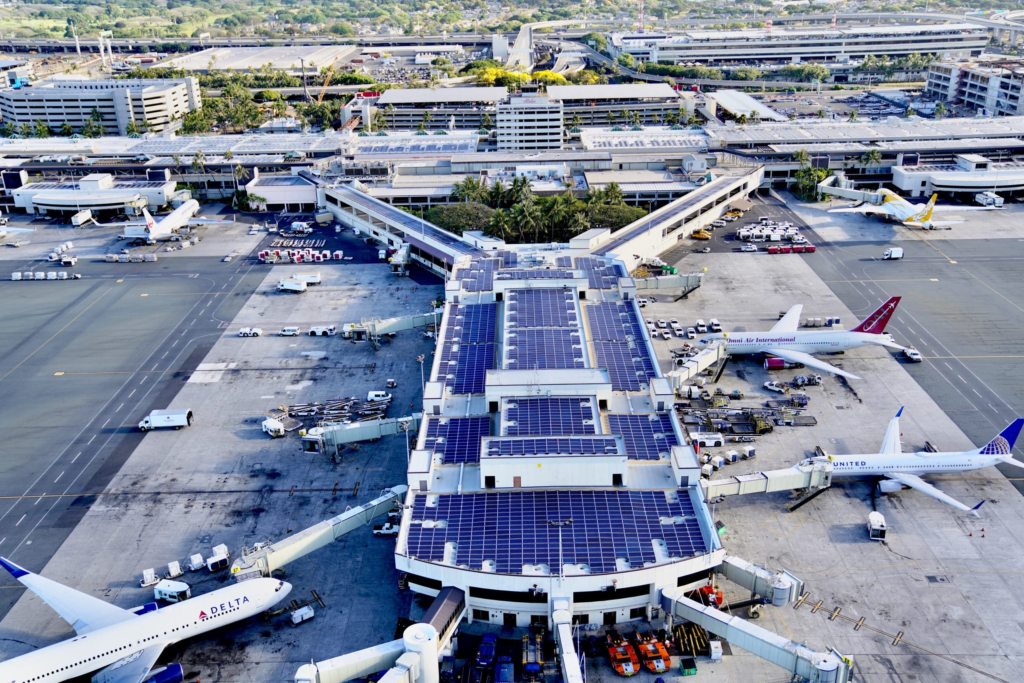As the global aviation industry races toward a net-zero future ✈️, airport operators face a critical choice: how to transform ground operations from a “black hole of costs and pollution ⚫” into a “green profit hub 💸.” Traditional diesel-powered Ground Support Equipment (GSE) devours millions of liters of fuel annually ⛽, accounting for over 40% of direct airport greenhouse gas emissions 🌫️, while hiding exorbitant maintenance costs 📑. Now, with mature electric GSE technology 🔋 and breakthroughs in mobile EV charging solutions like #iTrailerPortable ⚡, a triple revolution—cost reduction, carbon elimination, and efficiency gains—is quietly unfolding on airport tarmacs 🚀.
1. Cost Overhaul 💸: From “Fuel Economy” to “Digital Ledger”
Traditional GSE operating costs resemble a bottomless pit 🕳️: a single diesel baggage tractor consumes over $20,000 in fuel annually 💸, while complex drivetrains drive maintenance costs up to 25% of total ownership expenses 🔧. Electrification is rewriting this equation 📉:
- Energy Cost Slashed: Electric GSEs cut energy costs to 1/3 of diesel equivalents (at 0.13/kWhU.S.average💡).LosAngelesInternationalAirport(LAX)saves0.13/kWhU.S.average💡).LosAngelesInternationalAirport(LAX)saves1.8M yearly on fuel with its electric tractor fleet 💰.
- Maintenance Revolution: Simplified motors reduce critical components by 70% ⚙️. San Francisco International Airport (SFO) lowered electric pushback tractor maintenance costs by 42% 📉, achieving 98% operational uptime ✅.
- Policy Incentives: EU’s “Connecting Europe Facility” funds 50% of charging infrastructure 📜. Oslo Airport leveraged tax breaks to shorten electric GSE payback periods to 3 years ⏳.
2. Erasing Carbon Footprints 🌱: From “Emission Hotspots” to “Net-Zero Hubs”
Airport ground operations’ CO2 emissions are severely underestimated 🌫️—supporting a Boeing 777 flight burns diesel equivalent to 50 cars running for 8 hours ⛽. Electric GSEs’ zero-tailpipe emissions are resetting the curve 📉:
- Direct Emission Cuts: London Heathrow reduced GSE-related CO2 emissions by 68% 📊, equal to removing 12,000 cars annually 🚗💨.
- Circular Economy Wins: Amsterdam Schiphol repurposes retired GSE batteries for terminal energy storage ♻️, slashing lifecycle carbon footprints by 22% 🔋.
- Cleaner Air: Chicago O’Hare saw PM2.5 levels drop 19% 🌬️, with respiratory illness visits down 12% 🏥.
3. Sustainable Operations 🌍: From “Compliance Burden” to “Competitive Edge”
With IATA’s 2050 net-zero mandate 🎯, electric GSEs are now critical for ESG ratings 📈:
- Green Premium: 83% of corporate fliers pay 5-10% premiums for net-zero airports (Delta Air Lines 2023 survey 📊) 💹.
- Operational Resilience: Dubai Airport’s mobile EV charging network boosted GSE response speed by 35% ⚡ and extreme-weather uptime by 4x 🌪️✅.
- Brand Leadership: Singapore Changi Airport’s “Electric + Hydrogen GSE Hybrid” 🚀 earned it Skytrax’s “World’s Most Sustainable Airport” three years running 🏆.
4. Tech Breakthrough 🔌: Mobile EV Chargers Solve the “Last Mile” Challenge
The biggest barrier to electric GSE adoption isn’t the vehicles—it’s rigid charging infrastructure 🔗. Next-gen mobile EV charging stations like #iTrailerPortable and Leclanché’s MobiCube break barriers with 🚀:
- Dynamic Compatibility: 250-1000V range supports rapid charging for baggage carts to 80-ton aircraft tugs ⚡ (15-minute charge = 4-hour runtime ⏱️).
- Off-Grid Power: Solar-integrated units provide zero-carbon energy to remote gates ☀️. Sydney Airport cut diesel generator use by 90% ⛽📉.
- AI-Powered Load Balancing: Predictive algorithms optimize charging during low-rate periods 🔋, cutting Frankfurt Airport’s energy costs by 27% 💸.
5. Future Vision 🚀: From “Equipment Swap” to “System Transformation”
Leading airports are moving beyond hardware upgrades to integrated smart systems 💡:
- Digital Twin Optimization: Munich Airport’s virtual models boosted GSE dispatch efficiency by 40% 📈 and charger utilization to 91% 🔋.
- Vehicle-to-Grid (V2G): Narita Airport’s electric shuttles feed power back to terminals during peak demand 🔁, earning $2,000/day 💰.
- Autonomous Integration: Hong Kong International’s self-driving electric baggage system 🤖 reduced labor costs by 30% 👥 with 99.98% precision 🎯.
Conclusion: Electrification Isn’t the End 🏁—It’s the Dawn of a New Value Chain 🌐
When LAX’s silent electric tugs push Airbus A380s ✈️ or Heathrow’s mobile EV chargers refuel de-icing trucks in storms ⚡🌧️, these moments reveal more than tech upgrades—they herald a new airport economy where every joule of energy delivers both environmental and financial returns 💡💰. For airports committed to reinvention, GSE electrification is no longer optional ❓—it’s a survival imperative ⚖️.
Call to Action 📢: Join the Zero-Carbon Airport Revolution with #iTrailerPortable
In this transformation, ENE TCL’s #iTrailerPortable 🚚⚡ redefines ground operations with:
- Cost Killer 💸: 15-minute ultra-fast charging ⏱️ saves $120,000/year per unit in fuel costs 💰.
- Carbon Crusher 🌱: Every 100 kWh charged replaces 380L of diesel, offsetting 1.2 tons of CO2 🌍.
- Flexibility Unleashed 🚀: Deploy anywhere—runways, hangars 🏗️—with no fixed infrastructure ✅.
LAX slashed nighttime charging costs by 40% using #iTrailerPortable 🌙, while Changi Airport maintained 100% GSE uptime during typhoons via its off-grid mode 🌐🌀⚡.
The Race to Zero Emissions Is Now 🏁—
While traditional fleets bleed profits 📉 and carbon tariffs tighten 📑🌍, only early adopters will lead 🚀.
Act Now 👉:
Visit ENE TCL’s website 🌐 https://enetcl.com/ to download “Airport GSE Electrification: Cost & Carbon Savings Playbook” 📘 or schedule a #iTrailerPortable demo 🎥.
Turn your airport into a “Double Reduction” leader 🏆—cut costs and CO2 emissions while leaving competitors grounded ⏳.
The future is charging ahead 🔮—press start today! 🚀





